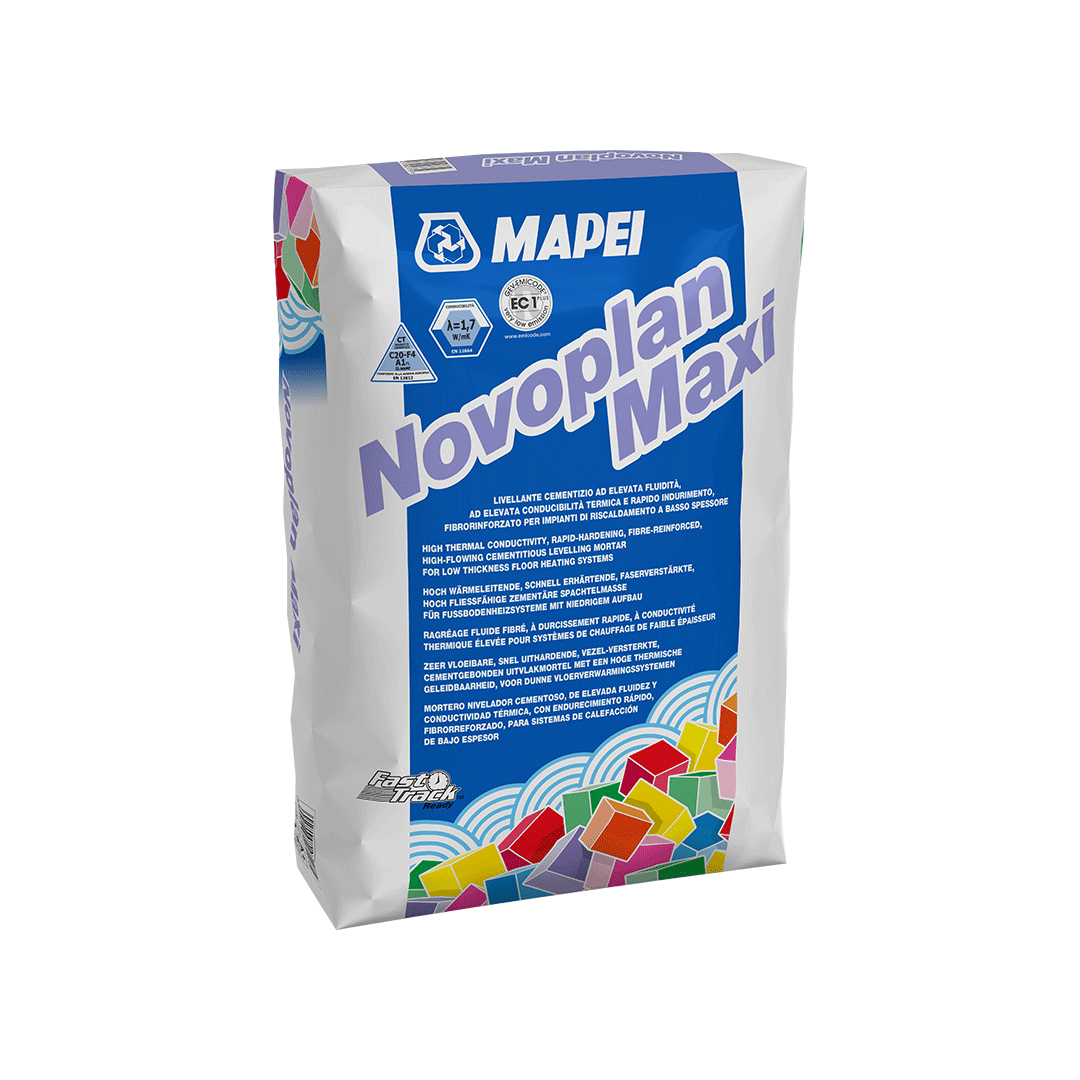
Heated floors with a high thermal yield
Choosing a screed with good thermal conductivity enables you to install highly energy efficient floors.
Installing a quality substrate is the key feature in guaranteeing the durability of floors. If we take a look at the latest trends in this sector, the type of substrate most widely used over the course of the last few years is the heated screed. To this aim, the Mapei Research & Development laboratories have developed materials which guarantee the mechanical requirements of the products used to create screeds, but which at the same time are characterised by an excellent level of thermal conductivity certified by independent, external bodies.
Installing a quality substrate is the key feature in guaranteeing the durability of floors.
And to achieve the best results, Mapei proposes a complete range of products and accessory items to create quality substrates: ready-mixed screed binders and mortars, self-levelling smoothing compounds, primers, soundproofing products to combat the noise of footsteps, and more.
If we take a look at the latest trends in this sector, the type of substrate most widely used over the course of the last few years is the heated screed, which is created by installing various types and sizes of heating systems, depending on the specific requirements of each project.
Alongside the thicker, more traditional systems (from 6 to 7 cm thick), which are used principally in new builds, a new generation of more compact systems (around 3 cm thick), that are also suitable for installation in existing buildings under renovation, are becoming a common feature.
These systems are based on warm water (usually around +35°C) or cold water (depending on the time of year) circulating through a circuit covering a very large radiating surface area. This type of solution offers, on the one hand, a higher level of living comfort in individual rooms, while on the other hand they are more efficient compared with traditional systems and, as a result, help reduce energy costs by around 10-15%.
The running costs of these heating systems may be further reduced by choosing products with a good level of thermal conductivity to make the substrate.
To this aim, the Mapei Research & Development laboratories have developed materials which guarantee the mechanical requirements of the products used to create screeds, but which at the same time are characterised by an excellent level of thermal conductivity certified by independent, external bodies.
- To create traditional heated screeds, Mapei recommends using TOPCEM PRONTO pre-blended, ready-to-use, normal-setting, controlled-shrinkage cementitious mortar for quick-drying screeds (4 days). TOPCEM PRONTO is classified CT C30-F6 A1flaccording to EN 13813 standards and is characterised by its high level of thermal conductivity: λ=2.008 W/mK. Also, when used for underfloor heating systems, TOPCEM PRONTO does not require any added plasticiser and enables substrates to be formed in compliance with the current European standard EN 1264-4.
- To create compact underfloor heating systems, made from pre-formed plastic of gypsum-fibre panels, Mapei recommends using NOVOPLAN MAXI rapid-hardening, hi-flow cementitious levelling mortar with a high level of thermal conductivity, classified CT C20-F6-A1fl according to EN 13813 standards: λ = 1.727 W/mK.
Stefania Boselli. Technical Services Mapei SpA









